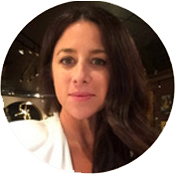MARTIN LEWIS
1880-1962
Martin Lewis is considered one of the greatest printmakers of the first half of the twentieth century. He used his superb sense of composition and his technical skill as a master printmaker to create images that are as captivating today as they were in the late 1920’s when he was first recognized as an important artist. He was one of the first printmakers to sell out an edition of a print during an exhibition, and many of his etchings and drypoints sold out in a few months. Martin Lewis spent most of his life living in New York City after arriving from Australia. However, he did travel to Europe and lived briefly in Japan and rural Connecticut.
Martin Lewis was born in Castlemaine, Australia, on July 9, 1880, the second of eight children. His father Evan Lewis was born in Pembrokeshire, Wales, and his mother, Victoria Caroline Spice, was born in Melbourne, Australia. Lewis enrolled in art classes on March 15, 1895. This represented the first formal art instruction he received. For a brief period Lewis studied with Julian Ashton, a prominent artist and teacher in Australia. He had several drawings accepted as illustrations for newspapers and it is believed he was exposed to printmaking by viewing old master prints during this time.
We know little of his travels between 1900 and 1905. Marilyn Kushner found he was listed as an artist in the New York directory in 1905. He was living on West 14th Street at this time with other artists. It is known that Lewis became a successful commercial artist during this time – his sense of design served him well. In 1910 he traveled to London and Wales, visiting his brother, Llewellyn, a priest, and his uncle in Wales. There is little doubt that he was exposed to printmaking. He became enamored with the work of Seymour Haden and was likely exposed to Whistler, Rembrandt, and other etchers. During this trip he also met Esta Verez, a singer. The two were together for the next decade.
Officially, Martin Lewis first etchings date from 1915, although crude when comparing them to his work in the late 1920’s. They show a greater competence of craftsmanship than first etchings generally do. However, nothing earlier survives. One can see his understanding of composition in Dockworkers Under the Brooklyn Bridge, and his appreciation of Japanese art with Moonlit Farm Scene. It was in 1915 that Martin Lewis was asked by his friend, Edward Hopper, to show him the finer points of etching. Lewis’ circle of friends included artists, writers, and playwrights. In 1920 Verez and Lewis broke off their relationship. He was frustrated with not being able to break into fine art and out of commercial art and with a bit of a broken heart, Lewis left for Japan. His plan was to make this move permanent.
The trip was important for the artist – he studied Ukiyo-E and other styles of Japanese art. He did paintings, watercolors, and drawings every day. He did not work on any prints, but he refined his artistic vision. He was not working at a job, just working on art. Sixteen months later he was broke and arranged to return to New York. In Japan he used up his savings and his need for money meant he went back to commercial art for a while. In 1924 he began making prints again – His subjects were from his travels in Japan. The Downtown Gallery represented him briefly before Kennedy Galleries. His first exhibition at Kennedy Galleries was in 1927 primarily for his watercolors; he included a few of his drypoints as well. The drypoints sold well and caught the attention of Otto Torrington, the head of the Print Department at Kennedy Galleries. The next year he had an exhibition at Kennedy Galleries featuring his etchings and drypoints. The demand for his prints at that show was overwhelming. One print, Relics, sold out in four months at $28 each. A month later the gallery sold a trial proof of Relics for $100. From 1928 on Martin Lewis would concentrate his career on printmaking.
Lewis met Lucile Deming through some literary friends: the poets Laura Benet, Lola Ridge and writers Evelyn Scott and Kay Boyle. They married in 1924. Martin Deming Lewis, their only child, was born on October 29, 1924. His birth certificate was listed as “Boy” Lewis because his father wanted to name him Hayden Seymour Lewis, but his mother would have no part of it. His father would call him Hayden for the rest of his life. His son officially changed his name when he entered the military during WWII.
During his career, Lewis made about 145 drypoints and etchings. His prints were much admired during the 1930s for their realistic portrayal of daily life and sensitive rendering of texture. The artist's skill in composition and his talent in the drypoint and etching media have received renewed attention from art collectors in recent years. Lewis is one of the few printmakers of this era who specialized in nocturnal scenes.
Institutions holding Lewis' work include The Metropolitan Museum of Art, Whitney Museum of American Art, The Museum of Modern Art, the Smithsonian American Art Museum,The Philadelphia Museum of Art, The National Gallery of Art and many, many others.










